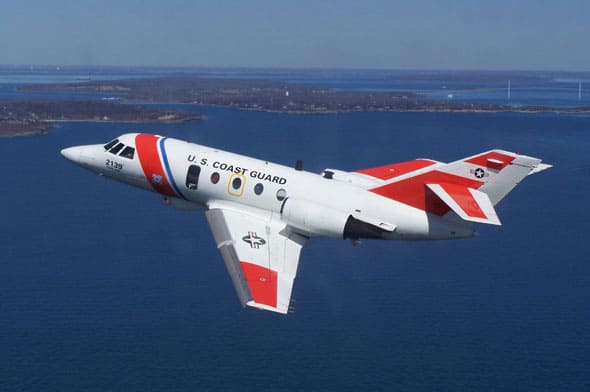 United States Coast Guard Air Station Borinquen is a direct descendant of Air Station San Juan, which was located on the Isla Grande Naval Station. In November 1971, the Air Station relocated to its present location at what was then Ramey Air Force Base in Aguadilla, and became known as Air Station Puerto Rico. Two years later the Air Force discontinued its operation at Ramey turning the facilities over to the Commonwealth of Puerto Rico and the United States Navy. The Coast Guard assumed the host role in July of 1976 when the Navy vacated the station. This alternative was chosen by the Commandant of the Coast Guard over three other options: discontinuance of air operations in Puerto Rico, building at Roosevelt Roads, or building at San Juan Airport. It was then that this unit was designated Coast Guard Air Station Borinquen. The name is derived from the Taino Indian name for the island of Puerto Rico.
United States Coast Guard Air Station Borinquen is a direct descendant of Air Station San Juan, which was located on the Isla Grande Naval Station. In November 1971, the Air Station relocated to its present location at what was then Ramey Air Force Base in Aguadilla, and became known as Air Station Puerto Rico. Two years later the Air Force discontinued its operation at Ramey turning the facilities over to the Commonwealth of Puerto Rico and the United States Navy. The Coast Guard assumed the host role in July of 1976 when the Navy vacated the station. This alternative was chosen by the Commandant of the Coast Guard over three other options: discontinuance of air operations in Puerto Rico, building at Roosevelt Roads, or building at San Juan Airport. It was then that this unit was designated Coast Guard Air Station Borinquen. The name is derived from the Taino Indian name for the island of Puerto Rico.
The Coast Guard has rehabilitated an additional 70,000 square feet of apron at its facility. A further 176,000 square feet of apron is also available on the north side of the Airport adjacent to the runway. A 194,150 square yard apron south of the runway, known as the “Charlie Area” exists, but requires major rehabilitation to reactivate. The “old B-52 apron” of 184,000 square yards is in good condition.
The Air Station originally utilized three HU-16 Albatross aircraft and two HH-52A helicopters to carry out search and rescue missions. Three HH-3F helicopters replaced these aircraft in March of 1973. The need for a long range law enforcement reconnaissance aircraft resulted in the addition of three HU-25A Falcon jets to the Air Station’s inventory in late 1983 and early 1984. In 1985, four new HH-65A short range rescue helicopters replaced the three HH-3Fs. The HU-25A Falcon Jets were replaced by the HC-130H Hercules in 1987. The Air Station currently operates four HH-65C helicopters and provides mission support for surge operations.
Air Station Borinquen consists of the hangar, the support buildings adjacent the hangar, and the housing area. The housing area presently has 225 units, a Coast Guard Club with adjoining swimming pool, La Plaza complex containing an exchange, mini-mart, and a preschool and daycare center. The Air Station has a complement of approximately 165 enlisted and 35 officers; 150 civilians are also employed on base. The rest of the base housing is occupied by various Army, Air Force, Navy, and Federal Agency personnel.
The Air Station operates within the San Juan SAR Sector, an area of over one million square miles. The primary mission, search and rescue, is but one facet of the multi-mission responsibility. Of special note was the unit’s significant response to the devastation left by Hurricane Hugo. This was truly a “Team Effort”. Other duties include support for aids to navigation, surveillance for illicit drug traffic, air interdiction of drug trafficking, patrolling of the 200 mile fisheries conservation zone, and marine environmental protection. The Air Station prosecutes approximately 300 Search and Rescue cases and flies approximately 450 law enforcement sorties per year.

